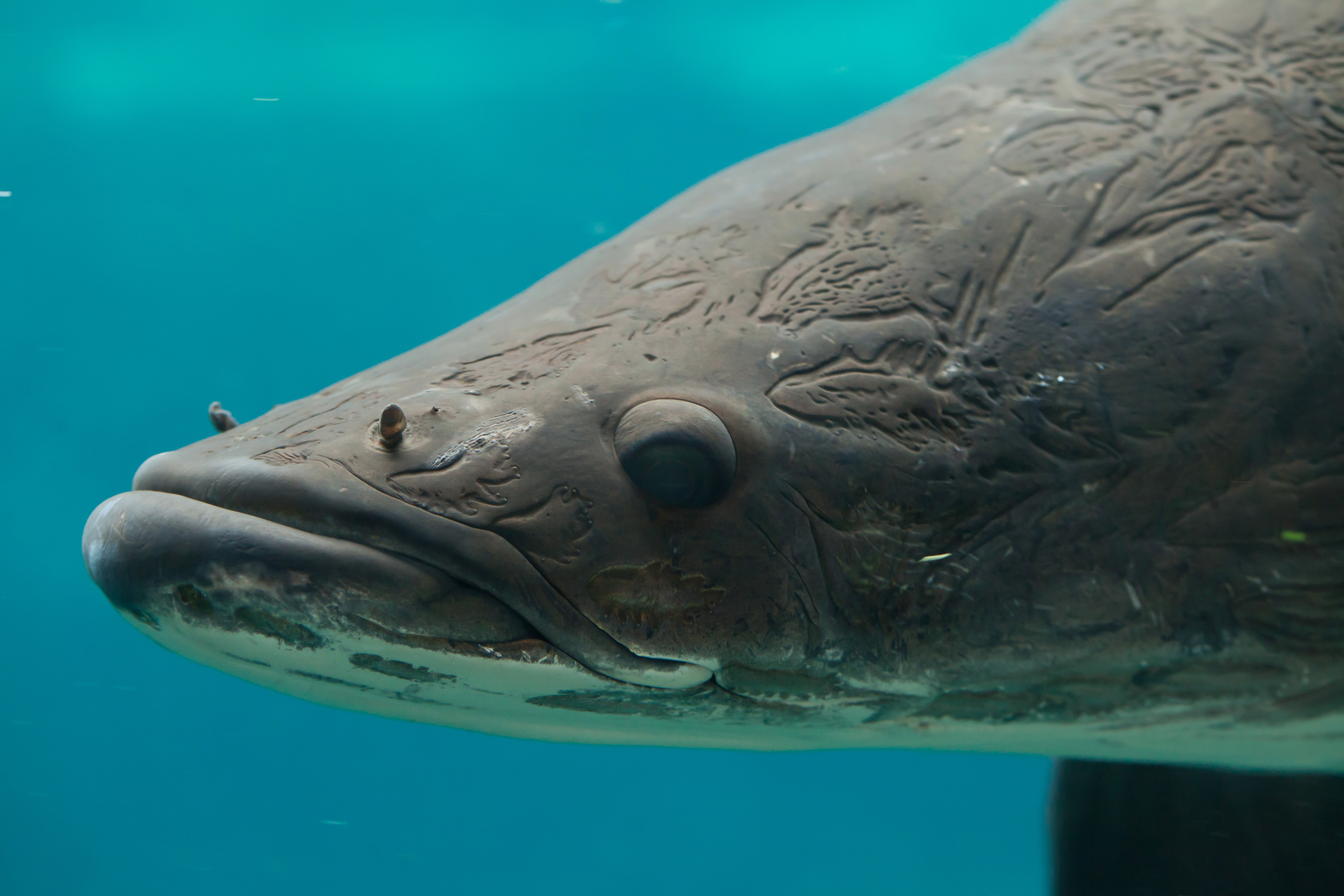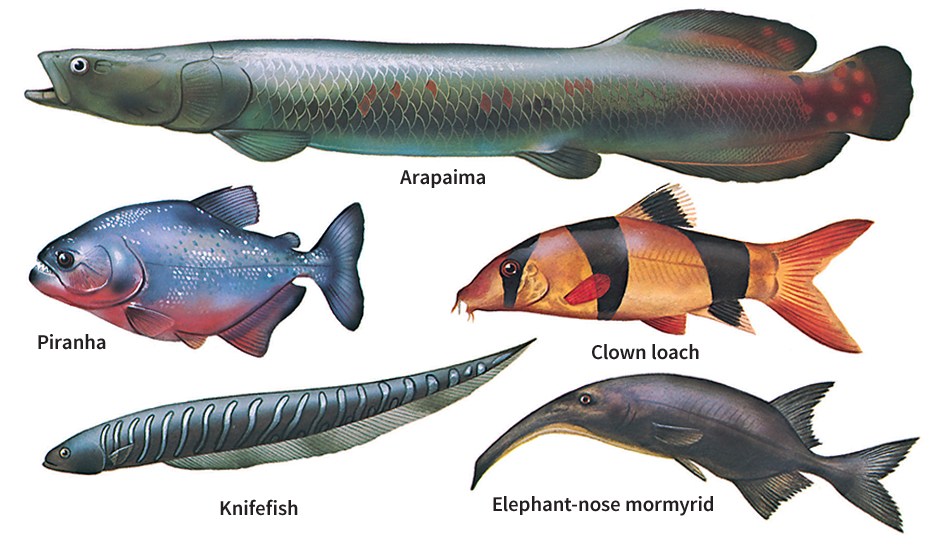Arapaima, << ar uh PY muh, >> also called the pirarucu, is one of the largest freshwater fish in the world. It can grow more than 8 feet (2.4 meters) long and weigh over 200 pounds (91 kilograms). The fish lives in the Amazon River system of South America.

The arapaima has a long body with long dorsal and anal fins. It possesses large eyes, large scales, and a bony covering on the head. The fish uses two different organs for breathing. Because the level of oxygen in its home waters is relatively low, an arapaima needs more oxygen than its gills can provide. To receive this additional oxygen, it breathes air with a baglike organ called the swim bladder.

Arapaima are, for fish, unusually protective of their offspring. A mating couple will make a nesting area in submerged plants. After the female lays her eggs, both parents closely guard the nest. Even after the young begin to swim, the parents still watch over them for a time. The young swim near their parent’s head until they grow large enough to venture out on their own. Arapaima generally feed on other fish.
Peoples of the Amazon have traditionally hunted the fish for food and for its body parts. They used the fish’s dried scales to make jewelry and the dried tongue as a grater. However, recent overfishing and habitat destruction have caused the number of arapaima to become drastically reduced.
